Russian Food Recipes Desserts Edition: Cakes, Pastries & Sweets to Try in 2025
Explore 2025’s best Russian food recipes desserts, from honey cakes to tea cookies. Try 15 traditional and modern Russian sweets made simple for U.S. kitchens!
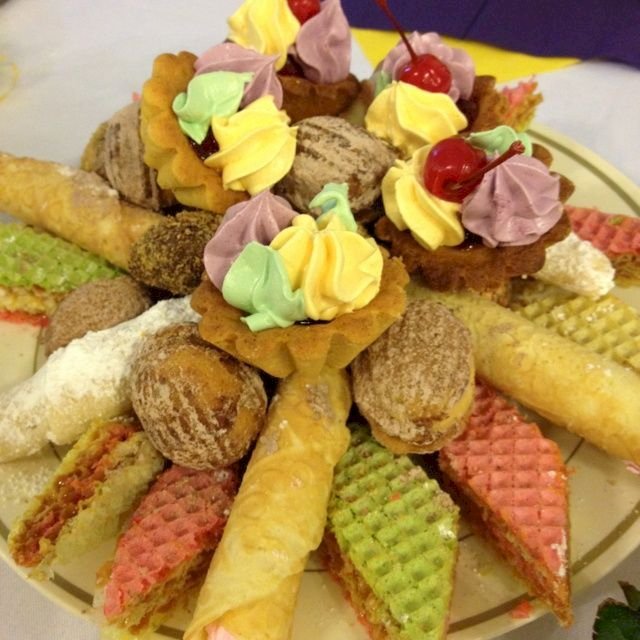
In 2025, Americans are showing a growing appetite for global desserts that combine rich heritage with comforting, home-style flavors. One of the most talked-about trends is the rising popularity of traditional Russian sweets. Based on recent search trends from platforms like Google and Pinterest, there has been a noticeable increase in interest for terms such as "Medovik," "Russian honey cake," and "Eastern European pastries." These desserts offer more than just great taste—they represent centuries of culinary tradition, often passed down through generations. Featuring ingredients like sour cream, condensed milk, honey, and farmer’s cheese (known as tvorog), Russian desserts strike a balance between indulgence and cultural authenticity. In this guide, you’ll find 15 classic and contemporary Russian dessert recipes, practical ingredient tips, estimated costs, and cultural insights to help you explore these timeless treats with confidence in your own kitchen.
What Makes Russian Desserts Unique?
Image source: encrypted-tbn0.gstatic.com
Russian desserts are known for their comforting richness and balanced sweetness, often made with wholesome, natural ingredients. Unlike many Western sweets that rely heavily on sugar, Russian treats typically use honey, fresh berries, dried fruits, and sour cream to create depth and flavor without overwhelming the palate. Traditional elements like tvorog (farmer’s cheese), poppy seeds, and nuts add unique textures and cultural significance.
What truly sets Russian desserts apart is their connection to tradition and family life. Many recipes are prepared for holidays, religious celebrations, or afternoon tea gatherings (chaepitie), where food is shared with warmth and intention. Whether it's a soft cheese bun at breakfast or a layered honey cake during Easter, these desserts are not just sweet—they’re part of a living cultural heritage passed down through generations.
Read: If you’re craving more classic American comfort food, don’t miss our guide to the Top 5 Sandwiches to Try at Stateside Deli in 2025—each one is a flavour-packed bite worth every visit.
Common Ingredients in Russian Dessert Recipes
Image source: encrypted-tbn0.gstatic.com
Russian desserts are known for their rich, comforting flavours and simple, natural ingredients. Below is a helpful guide to the most commonly used items in traditional Russian baking, along with how they're typically used:
|
Ingredient |
How It’s Used |
|
Tvorog (Farmer’s Cheese) |
A staple in desserts like syrniki (cheese pancakes), vatrushka (sweet buns), and cheesecake-style fillings. Its texture is crumbly yet creamy, offering a slightly tangy base. |
|
Condensed Milk |
Often used as a sweet filling or glaze in layered cakes, no-bake treats, and pastries. Adds rich sweetness and smooth texture. |
|
Honey |
A key ingredient in classic cakes like Medovik (honey cake), where it adds depth, natural sweetness, and a golden colour. |
|
Poppy Seeds |
Soaked and ground for use in rolls, pastries, and fillings. Common in Eastern European and Russian dessert traditions. |
|
Sour Cream |
Adds moisture and slight tanginess to cakes, frostings, and batters—especially in layered desserts. |
|
Fruit Preserves |
Commonly used as a filling for pirozhki, sweet buns, or served alongside pancakes and syrniki. Flavours like cherry, apricot, or raspberry are most popular. |
|
Buckwheat or Rye Flour |
Found in heritage-style baking—especially in rural or old-world recipes. Gives a nutty, earthy taste and denser texture. |
Tip: Many of these ingredients are widely available in the U.S. at international markets, Russian or Eastern European grocery stores, and in the international foods section of larger chains like Whole Foods or Wegmans. Online specialty retailers such as RussianFoodUSA.com also carry them.
15 Must-Try Russian Desserts in 2025 (With Serving Tips)
1. Medovik (Russian Honey Cake)
Image source: encrypted-tbn0.gstatic.com
Medovik is a traditional Russian dessert made with multiple thin layers of honey-infused sponge cake and a tangy sour cream or whipped cream frosting. The cake is assembled and then chilled overnight, allowing the layers to soften and absorb the cream—resulting in a moist, melt-in-your-mouth texture. Its rich yet balanced flavor makes it a popular choice for birthdays, holidays, and special gatherings.
Prep Tip: Use a sharp, hot knife (run under hot water) to slice cleanly through the layers and keep the presentation neat.
Fact Check: Medovik originated in the 19th century during the Russian Empire and remains one of the most iconic desserts across Eastern Europe today.
2. Ptichye Moloko (Bird’s Milk Cake)
Image source: encrypted-tbn0.gstatic.com
Ptichye Moloko, meaning “Bird’s Milk” in Russian, is a light and airy mousse cake layered with a delicate vanilla soufflé and covered in a thin chocolate glaze. Its texture is smooth and slightly bouncy—somewhere between a soft marshmallow and a creamy cheesecake. Originally popularized in the Soviet era, this elegant dessert is still a favorite at birthdays, anniversaries, and holiday celebrations across Eastern Europe. The name comes from a Slavic myth about a rare and magical substance, symbolizing something truly special—just like this cake.
3. Russian Tea Cakes (Snowballs)
Image source: encrypted-tbn0.gstatic.com
Russian Tea Cakes, also known as Snowball Cookies in the U.S., are soft, buttery cookies rolled in powdered sugar and often filled with finely chopped walnuts, pecans, or almonds. These cookies are known for their crumbly texture that melts in your mouth with every bite. Traditionally enjoyed during Christmas, weddings, and festive tea times, they’re easy to prepare using pantry staples like flour, butter, vanilla, and nuts.
Once baked, the warm cookies are generously coated in powdered sugar—not once, but twice—to create their signature snowy finish. They’re not overly sweet and pair beautifully with hot tea or coffee, making them a comforting treat all year round.
4. Syrniki (Russian Cheese Pancakes)
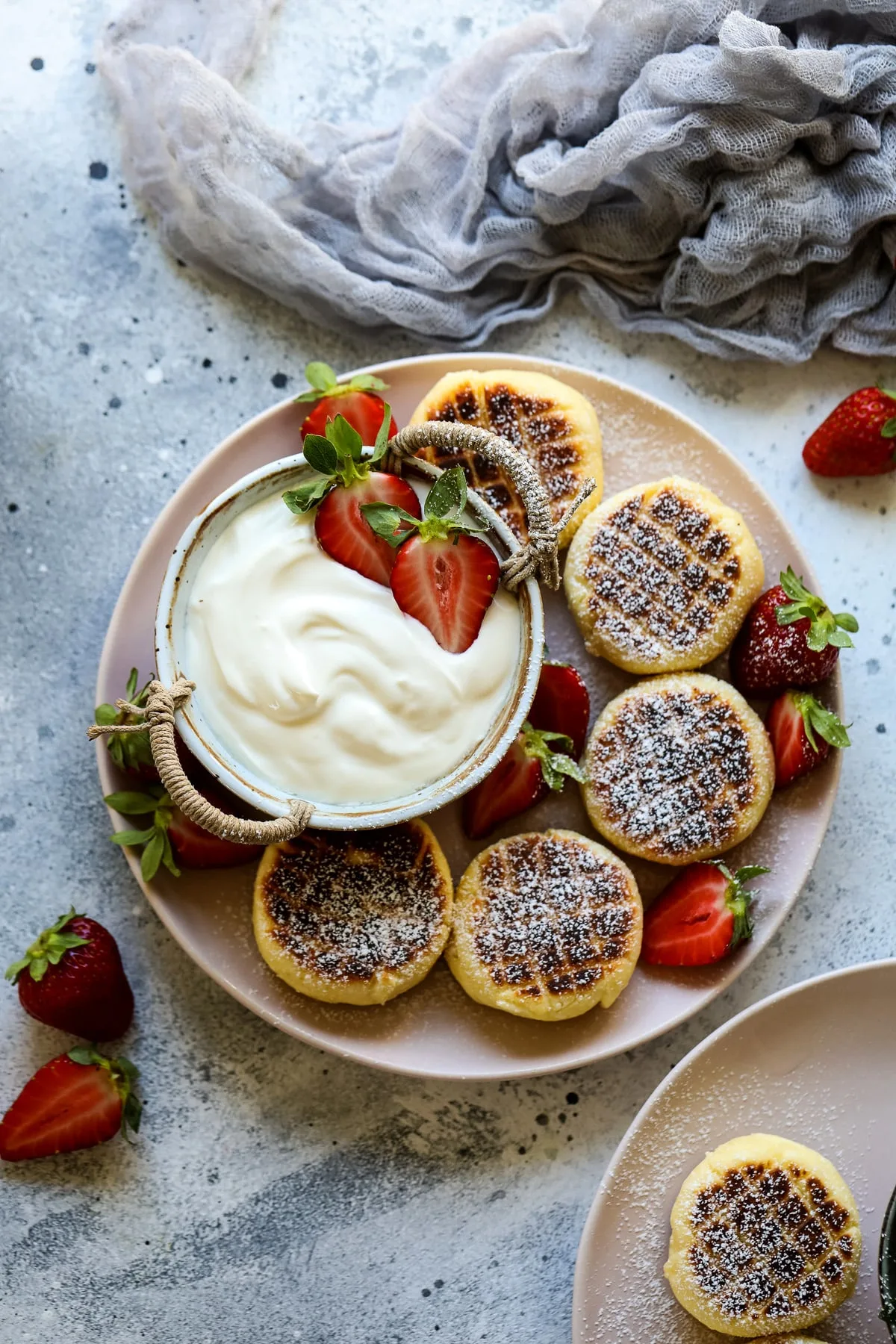
Image source: happykitchen.rocks
Syrniki are soft, lightly sweetened cheese pancakes made with tvorog (a type of farmer’s cheese popular in Eastern Europe). They are pan-fried until golden on the outside and remain creamy and tender on the inside.
Traditionally served warm, Syrniki pair beautifully with toppings like fruit jam, sour cream, honey, or fresh berries, making them perfect for breakfast, brunch, or a light dessert.
Tip: To help them hold their shape and avoid sticking, lightly dust the patties with flour before frying. For best results, use a non-stick or cast-iron pan with a small amount of butter or oil.
Note: If you can’t find tvorog in your area, a mix of well-drained cottage cheese and cream cheese or ricotta can be a suitable substitute.
5. Vatrushka (Sweet Cheese Buns)

Image source: allweeat.com
Vatrushka is a classic Eastern European pastry made from soft yeast dough with a sweet cheese filling in the center, often using farmer's cheese or ricotta. The buns are typically round with a slightly indented center that holds the creamy filling. Some variations include raisins or a touch of vanilla for extra flavor.
Light, fluffy, and mildly sweet, Vatrushkas are traditionally enjoyed with black tea and are a popular treat for breakfast or afternoon snacks across Russia and Ukraine. They’re best served warm and can be topped with powdered sugar or brushed with egg for a golden finish.
Read More: Looking for more quick and satisfying dinner ideas? Try our Creamy Chicken Penne Vodka Pasta Recipe: Easy 30-Minute U.S. Dinner in 2025—rich, comforting, and perfect for busy weeknights.
6. Pirozhki with Fruit Filling
Image source: encrypted-tbn0.gstatic.com
Pirozhki (also spelled piroshki) are small, handheld pastries that can be baked or fried, with a soft, slightly sweet dough. When filled with fruit—such as cherries, apples, blueberries, or jam—they become a delightful dessert or snack.
These mini pies are popular in Russian and Eastern European households and are often made in batches for family picnics, school lunches, or tea-time treats. The fruit filling is typically lightly sweetened and sometimes thickened with cornstarch to avoid leaks during baking.
Tip: Brush the tops with egg wash for a golden, glossy finish. Serve warm with a dusting of powdered sugar or alongside black tea for an authentic touch.
7. Zefir (Russian Fruit Marshmallow)
Image source: encrypted-tbn0.gstatic.com
Zefir is a soft, airy dessert that closely resembles a marshmallow but is made with natural fruit puree—traditionally apple or berry—blended with egg whites and sugar. Unlike commercial marshmallows, zefir contains no gelatin and gets its structure from pectin or agar, making it lighter and melt-in-the-mouth.
Popular in Russia and Eastern Europe, zefir is typically formed into elegant, swirled shapes and dusted lightly with powdered sugar. It comes in pastel colors like pink, white, or soft purple, depending on the fruit used. The taste is sweet but fruity, with a chewy exterior and a fluffy interior.
Zefir is often served with tea and is commonly gifted during holidays or celebrations.
8. Napoleon Cake (Russian Mille-Feuille)

Image source: i.pinimg.com
Napoleon Cake is one of the most beloved Russian desserts, made by layering delicate sheets of crispy puff pastry with rich, homemade custard cream. After assembly, it’s traditionally chilled overnight, allowing the pastry to absorb the cream and soften into a tender, sliceable cake. The result is a melt-in-your-mouth texture with a perfect balance of crisp and creamy. This dessert is especially popular during New Year’s and festive gatherings across Russia and Eastern Europe.
Fun fact: While similar to the French mille-feuille, the Russian version typically uses more layers and a lighter cream.
9. Kissel (Fruit Pudding Drink)

Image source: i.pinimg.com
Kissel is a traditional Eastern European dessert that falls somewhere between a drink and a pudding. Made by thickening sweetened fruit juice or puree with potato starch or cornstarch, it has a smooth, jelly-like consistency. Depending on the recipe, it can be served warm or chilled, in a glass or bowl.
Popular among both children and adults, Kissel is commonly made with berries like raspberries, strawberries, or blackcurrants, but can also be made with cherries or plums. It’s naturally fruity, lightly sweet, and often enjoyed as a refreshing end to a meal or a midday snack.
Fun Fact: Kissel contains no dairy or fat, making it a popular option for light desserts or vegan diets.
10. Sharlotka (Russian Apple Sponge Cake)
Image source: encrypted-tbn0.gstatic.com
Sharlotka is a classic Russian apple sponge cake known for its simplicity and comforting flavor. Made with just a few pantry staples—eggs, sugar, flour, and fresh apple slices—this dessert is light, fluffy, and not overly sweet. It’s often enjoyed as an everyday treat with tea or served at family gatherings. Traditionally, it's finished with a dusting of powdered sugar and sometimes a hint of cinnamon for extra warmth. What makes Sharlotka special is how the apples soften and caramelize slightly during baking, blending beautifully into the airy sponge. It’s easy to prepare, beginner-friendly, and perfect for using up seasonal apples.
11. Kartoshka (Chocolate Potato Cakes)
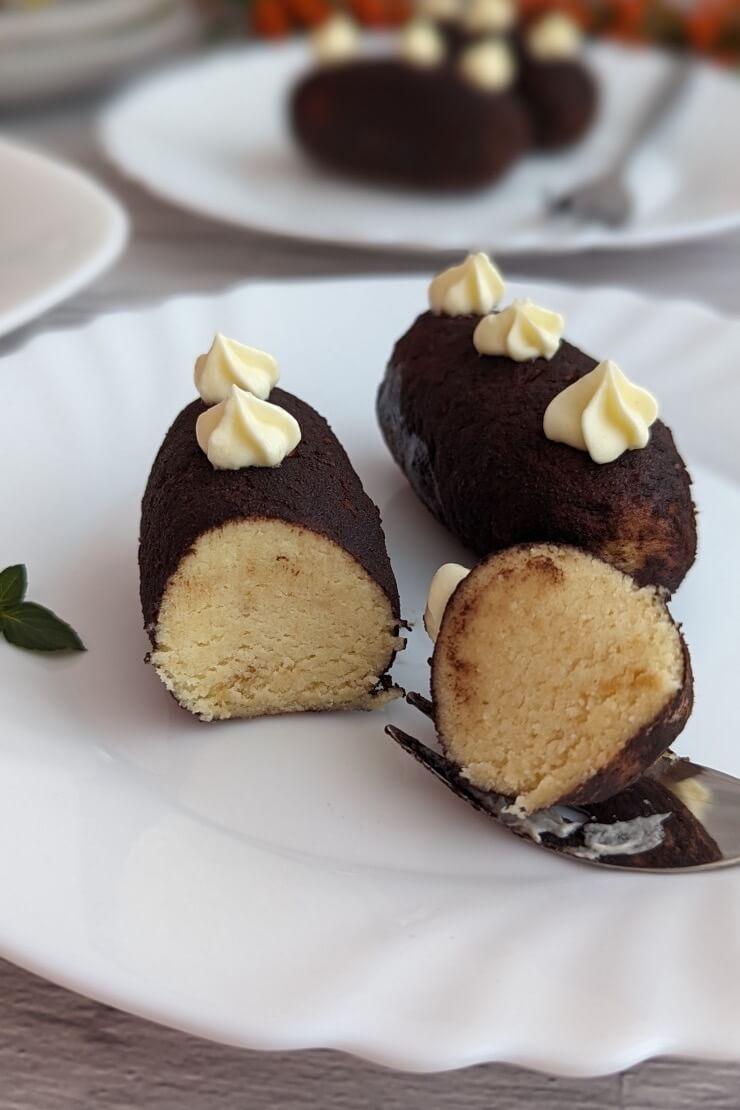
Image source: www.inspirationsforall.com
Kartoshka, which means "potato" in Russian, is a classic no-bake dessert that gets its name from its potato-like shape—not its ingredients. These sweet treats are made by combining crushed tea biscuits, sweetened condensed milk, cocoa powder, and butter to form a rich, truffle-like dough. The mixture is shaped into small logs or ovals, then rolled in cocoa powder or crushed nuts to resemble unpeeled potatoes.
This nostalgic dessert was especially popular during Soviet times due to its simplicity and use of affordable pantry staples. Today, it’s still a favourite in Russian households and bakeries, often decorated with a dot of cream to mimic a sprouting eye.
Prep Time: 15–20 minutes
Chill Time: 1–2 hours in the fridge for best texture
Tip: Add a splash of rum or vanilla extract for extra depth of flavour.
12. Tvorozhniki (Cheese Patties with Raisins)

Image source: img.freepik.com
Tvorozhniki are soft, pan-fried cheese patties made from tvorog (a type of farmer’s cheese), sweetened with sugar and often mixed with raisins or vanilla for added flavor. While they resemble Syrniki in shape and ingredients, Tvorozhniki are typically sweeter and intended specifically as a dessert, rather than breakfast.
They’re usually coated lightly in flour or semolina before frying, giving them a golden crust and tender center. Best served warm, Tvorozhniki pair wonderfully with fruit syrups, honey, or a dollop of sour cream. In Russian households, they’re a favorite treat during tea time or festive gatherings.
Tip: For extra richness, add a pinch of cinnamon or lemon zest to the batter.
13. Pryaniki (Spiced Cookies)
Image source: encrypted-tbn0.gstatic.com
Pryaniki are traditional Russian spice cookies often compared to soft gingerbread. Made with warming spices like cinnamon, nutmeg, cloves, and sometimes cardamom, they have a rich, aromatic flavor. The dough is typically sweetened with honey or molasses, giving it a slightly chewy texture. Pryaniki are usually glazed with a light sugar icing and enjoyed during festive seasons, especially winter holidays like Christmas and New Year. They pair wonderfully with tea and are popular across Eastern Europe as a comforting treat.
Paskha is a rich, creamy dessert traditionally served in Russia during Orthodox Easter celebrations. It’s made from tvorog (a type of farmer’s cheese), butter, eggs, sugar, and often mixed with dried fruits, candied peel, and nuts. The mixture is shaped in a special pyramid mold called a pasochnitsa, symbolising Christ’s tomb, and often decorated with religious symbols such as “XB” (meaning “Christ is Risen” in Cyrillic).
Unlike baked desserts, Paskha is usually chilled and set, not cooked. It’s commonly paired with kulich (Easter bread) and served as part of a festive table shared with family after church services.
Note: Traditional recipes avoid baking to preserve the fresh taste of the cheese. Modern versions may include cream cheese or ricotta as substitutes for tvorog if unavailable.
15. Kulich (Russian Easter Bread)
Image source: encrypted-tbn0.gstatic.com
Kulich is a tall, cylindrical sweet bread traditionally baked for Orthodox Easter celebrations. It's rich and slightly sweet, often flavoured with vanilla, citrus zest, and dried fruits. After baking, it's glazed with a sugar icing and decorated with colourful sprinkles or nuts. Kulich is typically served alongside Paskha, a creamy cheese dessert, and blessed during the Easter church service before being shared with family.
Also Read: Looking for the perfect sweet ending to your meal? Don’t miss our guide to No Bake Blueberry Dessert Recipes You’ll Love in 2025 (Quick & Easy!)—a collection of refreshing, fuss-free treats ideal for any occasion.
Ingredient Substitutes for U.S. Home Bakers
Image source: encrypted-tbn0.gstatic.com
If you're baking Russian desserts in the U.S. and can’t find some traditional ingredients, here are the best alternatives that work well in most recipes:
|
Russian Ingredient |
Best U.S. Substitute |
Usage Tip |
|
Tvorog (Farmer’s Cheese) |
A mix of cottage cheese and cream cheese, or use drained ricotta |
Blend until smooth for fillings like syrniki or vatrushka |
|
Smetana (Russian Sour Cream) |
Use crème fraîche or full-fat American sour cream |
Crème fraîche has a closer tang and thickness to smetana |
|
Poppy Seeds (for fillings) |
Same ingredient, but always soak in warm milk or water for 30–60 minutes before using |
Softens the seeds and brings out nutty flavor, ideal for rolls or pastries |
Note: Texture matters! Always blend or strain your substitutes to match the original Russian ingredient’s consistency.
Baking Russian Desserts on a Budget in 2025
Image source: encrypted-tbn0.gstatic.com
Baking delicious Russian desserts at home doesn’t have to break the bank. In fact, many traditional recipes rely on simple, affordable ingredients like flour, sour cream, and fruit preserves. Here's a breakdown of the average monthly cost for essential baking ingredients in the U.S., based on mid-2025 pricing trends:
|
Ingredient Group |
Estimated Monthly Cost (USD) |
|
Dairy (e.g., cheese, sour cream) |
$30–$50 |
|
Pastry Basics (e.g., flour, sugar, eggs) |
$20–$30 |
|
Fruits & Jams (fresh or jarred) |
$25–$40 |
|
Specialty Items (e.g., poppy seeds, tvorog) |
$15–$25 |
These figures are based on the U.S. Market Basket Estimate, Q2 2025, and represent average costs for moderate home baking activity (3–5 recipes per month). Prices may vary depending on region, brand, and whether you shop in bulk or organic.
Money-Saving Tip:
Buy in bulk at wholesale stores or check international markets for traditional ingredients like tvorog and poppy seeds—they’re often more affordable and authentic in flavor.
Where to Buy Russian Baking Ingredients in the U.S. (2025)
Image source: encrypted-tbn0.gstatic.com
If you're planning to make authentic Russian desserts like Medovik, Syrniki, or Pirozhki, sourcing the right ingredients is key. Thankfully, many essential items—such as tvorog (farmer’s cheese), buckwheat flour, poppy seeds, and sour cream—are now easier to find in the U.S. than ever before.
Here’s where you can shop:
Russian & Eastern European Grocery Stores

Image source: res.cloudinary.com
These specialized stores often carry authentic brands and hard-to-find ingredients:
- NetCost Market – Located in New York, New Jersey, Pennsylvania, and Florida
- Brighton Bazaar – Based in Brooklyn, known for its wide selection of Eastern European products
- Skazka Eastern European Deli (varies by state) – Carries dairy, flour, jams, and ready-to-eat pastries
Look here for real tvorog, smetana (Russian sour cream), and fruit preserves used in traditional baking.
Online Retailers (Nationwide Delivery)

Image source: i.pinimg.com
Perfect for anyone without a local specialty market:
- Amazon – Offers imported pantry items like condensed milk, buckwheat flour, and mold shapes
- RussianFoodUSA.com – Dedicated Russian food store shipping across the U.S.
- EuropeanDeli.com – Stocks baking mixes, jams, and festive seasonal ingredients
Note: Be sure to check shipping times for perishable items like dairy or cheese alternatives.
Mainstream Grocery Stores
Image source: encrypted-tbn0.gstatic.com
Many larger grocery chains stock Eastern European staples in their international or specialty aisles:
- Whole Foods Market – Look for organic sour cream, European-style butter, and fruit spreads
- Kroger, Safeway, and Publix – You may find poppy seeds, sour cream, and imported flours depending on your region
Pro Tip: Use the store's online shopping feature or app to search by ingredient name before visiting.
Local Farmers’ Markets

Image source: cancerroadtrip.com
While not always labeled “Russian,” many farmers’ markets sell items perfect for traditional recipes:
- Fresh dairy products like farmer’s cheese or ricotta (a substitute for tvorog)
- Handmade fruit jams for fillings
- Local honey, a key ingredient in Medovik and other baked treats
Modern Russian Dessert Variations (2025 Update)

Image source: i.pinimg.com
As more people embrace dietary preferences and health-conscious choices in 2025, traditional Russian desserts are being reimagined to suit modern lifestyles—without losing their authentic charm.
Here are some popular and tested variations:
Vegan Medovik (Honey Cake Alternative)
A plant-based twist on the classic layered honey cake. Instead of traditional honey and sour cream, bakers now use agave syrup or maple syrup and vegan sour cream made from cashew or coconut base. The texture remains soft and moist, with a gentle sweetness that rivals the original.
Gluten-Free Napoleon Cake
This iconic multi-layer pastry dessert is now made using almond flour or gluten-free all-purpose blends, and arrowroot starch or cornstarch for thickening the custard. It retains its creamy center and flaky top, offering a celiac-friendly version that doesn’t compromise on taste or structure.
Low-Sugar Sharlotka (Apple Sponge Cake)
A healthier version of the traditional apple sponge cake, this recipe uses unsweetened applesauce or pureed apple to replace much of the added sugar. A small amount of coconut sugar or date syrup can be used if needed, keeping it light, moist, and diabetic-friendly.
Dairy-Free Syrniki (Cheese Pancakes)
For those avoiding dairy, Syrniki can now be made with firm tofu, almond-based ricotta, or soy-based cheese alternatives. When seasoned with vanilla and a touch of lemon zest, these pancakes still deliver the same crispy edges and soft, sweet centers.
Sources: Natasha’s Kitchen, Olga’s Flavor Factory – Trusted food blogs known for adapting Eastern European recipes to modern diets
Dessert Pairings & Presentation Tips

Image source: i.pinimg.com
- Serve with Russian black tea – Traditionally, Russian desserts are enjoyed with strong black tea served with a slice of lemon (but without milk). This pairing balances the sweetness of cakes like Medovik or sweet buns like Vatrushka.
- Try with Kompot – Kompot is a classic homemade fruit drink made by simmering fresh or dried fruits like cherries, apples, or berries with sugar. It’s a popular non-alcoholic beverage in Russia, especially refreshing when chilled.
- Pair with dessert wine or coffee – Richer desserts such as Napoleon Cake or Kartoshka pair wonderfully with a light dessert wine or a strong cup of coffee. The bitterness of coffee helps cut through the sweetness and creaminess.
- Presentation tip – For a traditional feel, serve your Russian desserts on vintage china, porcelain plates, or rustic wooden boards. Add lace doilies, fresh berries, or powdered sugar dusting to elevate the visual appeal and give your table an authentic Eastern European charm.
Read More: Looking to add more visual flair to your dessert spread? Don’t miss these 15 Colorful Desserts That Will Brighten Any Table in 2025—perfect for parties, holidays, or just a cheerful treat at home.
Cultural Insight: Why Russian Desserts Matter

Image source: cdn.tasteatlas.com
Russian desserts are more than just sweet treats—they’re a meaningful part of the country's social and cultural fabric. Traditionally served during "chaepitie" (tea time), these desserts symbolize hospitality, warmth, and family connection. Whether it's a slice of Medovik at a birthday, Paskha during Easter, or simple tea cakes at an afternoon gathering, these confections help mark important life moments and seasonal traditions. Passed down through generations, Russian desserts not only satisfy the palate but also preserve stories, customs, and a strong sense of community.
Conclusion
Russian dessert recipes offer more than just sweetness—they invite you into a rich cultural tradition full of comfort, history, and homemade charm. From the crispy edges of Syrniki to the layered elegance of Medovik, each treat brings a unique taste of Eastern Europe to your kitchen. With widely available ingredients like sour cream, condensed milk, and fruit preserves, even beginner bakers can enjoy making these desserts at home. In 2025, as more people seek meaningful cooking experiences, Russian sweets are a perfect way to impress guests, celebrate holidays, or simply share something special with your family.
Frequently Asked Questions (FAQs) About Russian Desserts
Q1: What is the most iconic Russian dessert?
A1: One of the most iconic Russian desserts is Medovik, also known as Russian Honey Cake. This layered cake features thin, honey-infused layers with a sour cream or custard filling. It’s a staple at holidays and special occasions, beloved for its balanced sweetness and melt-in-your-mouth texture.
Q2: Are Russian desserts suitable for beginner bakers?
A2: Yes, many traditional Russian desserts are surprisingly beginner-friendly. Popular choices like Syrniki (cheese pancakes), Sharlotka (apple sponge cake), and Russian Tea Cakes (snowball cookies) require simple ingredients and basic techniques—perfect for home cooks of all skill levels.
Q3: Are Russian desserts overly sweet?
A3: Not at all. Most Russian desserts are known for their mild and balanced sweetness. Instead of using excessive sugar, many recipes rely on natural ingredients like honey, fruit preserves, and dairy to add subtle richness and flavor.
Q4: Where can I buy ingredients for Russian desserts in the U.S.?
A4: You can find most ingredients at:
- Eastern European or Russian grocery stores
- Major supermarkets with an international foods aisle (e.g., Whole Foods, Wegmans, Kroger)
- Online retailers like Amazon or RussianFoodUSA for items such as tvorog, smetana, and poppy seeds
Tip: If you can’t find tvorog, try a mix of ricotta and cream cheese as a substitute.
Q5: Can I make Russian desserts gluten-free or vegan?
A5: Yes! Many traditional recipes can be adapted for special dietary needs:
- Use gluten-free flour blends in cakes and cookies
- Swap dairy with plant-based options like almond-based sour cream or vegan butter
- For egg-free recipes, try flax eggs or applesauce in sponge-style cakes
Modern versions of Medovik and Napoleon are often made gluten-free or dairy-free in home kitchens today.

 Selina Smith
Selina Smith ![Top 5 Brunch Dishes to Try at Stateside Kitchen Nashville [2025 Guide]](https://statesidemagazine.com/uploads/images/2025/05/image_380x226_68147889f1053.jpg)
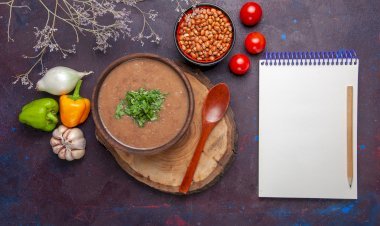


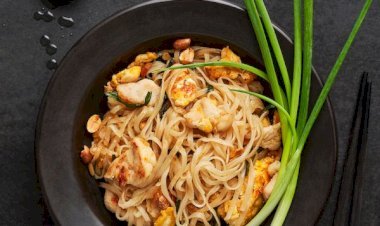




![AutoZone Business Hours [2025]: Complete Guide to Store Times, Holidays & Tips](https://statesidemagazine.com/uploads/images/2025/06/image_140x98_6852d31a1eb7b.jpg)





